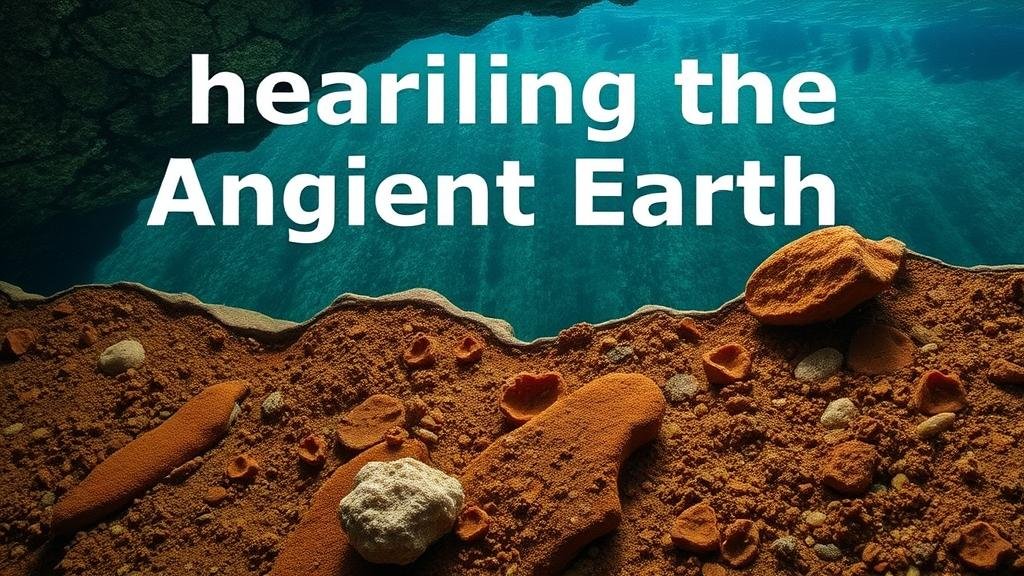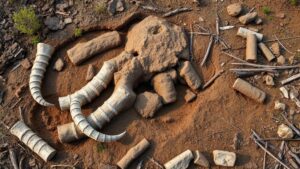Unearthing the Ancient Earth: Fossilized Microorganisms in Deep Sediments
Unearthing the Ancient Earth: Fossilized Microorganisms in Deep Sediments
For rockhounds and mineral collectors, the thrill of discovery lies not just in the striking aesthetics of geological specimens, but also in the stories they tell us about the Earths history. Among these stories, fossilized microorganisms found in deep sediments paint a detailed picture of our planets ancient ecosystems. These microorganisms, ranging from bacteria to algae, provide valuable insights into the evolution of life and the geological processes that have shaped our world.
The Significance of Fossilized Microorganisms
Fossilized microorganisms, also known as microfossils, are crucial to understanding Earths biological and geological past. are often preserved in sedimentary rocks and can be millions to billions of years old. Microfossils serve as biostratigraphic markers, allowing geologists to date sediment layers and correlate them across regions.
In fact, a report published by the United States Geological Survey (USGS) highlights that microfossils can date back to the Archaean era, over 3.5 billion years ago. They account for approximately 70% of Earths biodiversity, making their study essential in grasping the complexities of ancient environments.
Diverse Types of Microfossils
Microfossils encompass a variety of organisms, each providing different insights into historical environments:
- Foraminifera: These single-celled protists have been crucial in paleoclimatology. are often used for dating sediments and interpreting past ocean conditions.
- Pollen Grains: Preserved pollen can provide a snapshot of past vegetation and climate changes, revealing how flora adapted over time.
- Diatoms: These algae encase themselves in silica, forming exquisite patterns. Their abundance in marine deposits allows scientists to track historic oceanic changes.
- Coccolithophores: These tiny algae are covered in calcium carbonate plates, which can contribute significant amounts of sediment and inform about ocean chemistry.
Collecting and Identifying Microfossils
For rockhounds and collectors, discovering microfossils requires specific techniques and tools, as they are often embedded in sedimentary layers. Here are practical tips for aspiring collectors:
- Research Locations: Understand where you can legally collect. Look for sedimentary rock formations, particularly limestone or shale, which are known to contain microfossils.
- Use the Right Tools: A rock hammer, chisels, and a hand sieve can help you extract sediment. A field microscope and a magnifying glass are essential for identifying microfossils.
- Practice Patience: Collecting microfossils can be meticulous work that requires careful observation and a keen eye for detail.
Real-World Applications of Microfossil Study
The study of fossilized microorganisms extends beyond academic curiosity. Various industries, including oil and gas, rely on microfossils for exploration. For example, petroleum geologists analyze foraminifera and other microfossils to locate potential hydrocarbon reservoirs. According to the American Association of Petroleum Geologists, up to 90% of data used in petroleum exploration comes from microfossil analysis.
Plus, environmental scientists utilize microfossils in sediment cores to reconstruct past climate conditions and assess ecological responses to climate change. By examining the composition of microfossil communities, researchers can infer gradients of temperature, salinity, and nutrient levels during different geological epochs.
Challenges in Microfossil Collection
Collecting microfossils comes with challenges. Many rocky formations are fragile, making it crucial to follow ethical guidelines–and local laws–when collecting. Also, differentiating between microfossils can be difficult, as many resemble one another. It is advisable to refer to established guides or consult experts when in doubt.
Actionable Takeaways
In summary, fossilized microorganisms hold the key to unlocking the secrets of Earth’s ancient past, providing collectors with both valuable specimens and insights into the planet’s history. As practices in collection and identification improve, rockhounds can contribute to ongoing research and discovery in paleontology and geology. Keep the following in mind:
- Do thorough research on locations and obtain any needed permissions before collecting.
- Invest in proper tools for extraction and examination.
- Engage with local geological societies to enhance knowledge and network with fellow enthusiasts.
Exploring the world of microfossils can be a rewarding venture, merging the excitement of collection with the profound understanding of our planets past.



